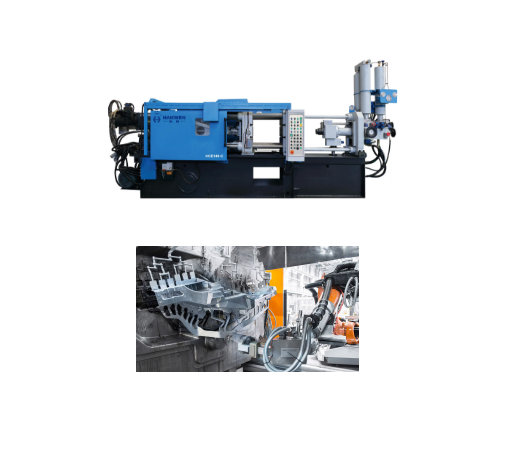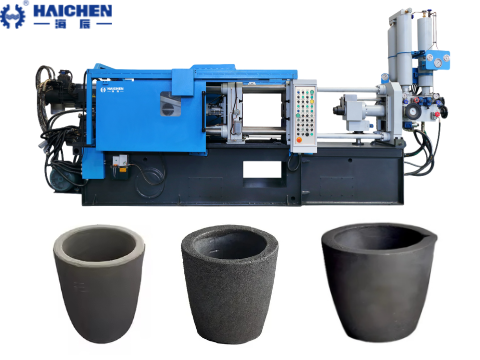Graphite crucibles and ceramic crucibles each have their own advantages and disadvantages,there is no absolute “better”.
The choice depends on specific application requirements, such as temperature, environment, material type and operating conditions.
Graphite crucibles have obvious advantages in thermal conductivity, high-temperature tolerance in non-oxidizing environments, and efficient melting, but they are fragile and require atmosphere control.
Ceramic crucibles are superior in mechanical strength, thermal shock resistance and corrosion resistance, and are especially suitable for oxidizing environments.
High temperature resistance
- Graphite Crucible
- Ceramic crucibles
- Conclusion
Graphite Crucible
The typical use temperature range is 1200-1400°C, and it can withstand 2000-2500°C for a short period of time in vacuum or inert environments.
However, in the oxidation environment, oxidation begins at more than 400°C, and oxidation accelerates above 800°C.

Ceramic crucibles
Alumina ceramic: temperature resistance 1600-1800 °C
Zirconia ceramic: temperature resistance 1800-2100 °C
Boron nitride ceramics: up to 2000-2100°C in vacuum or inert environments.
Conclusion
Ceramic crucibles are more advantageous in extreme high temperature (>1600°C) and oxidation environments.

Thermal conductivity and thermal efficiency
- Graphite crucibles
- Ceramic crucibles
- Conclusion
Graphite crucibles
With a thermal conductivity of up to 751 W/mK, a small coefficient of thermal expansion, fast and uniform heat transfer.
Melting time can be shortened by 30-50% and energy consumption can be significantly reduced.
Ceramic crucibles
The thermal conductivity is generally low (e.g., the thermal conductivity of alumina is about 30 W/mK), and the heating rate is limited.
The exception is boron nitride ceramics, which are close to graphite in thermal conductivity.
Conclusion
Graphite crucible has superior thermal conductivity efficiency and is suitable for rapid smelting scenarios.

Thermal shock resistance
- Graphite crucible
- Ceramic crucible
- Conclusion
Graphite crucible
The coefficient of thermal expansion is anisotropic, and the ability to resist quench and heat is strong, and it can withstand a temperature change rate of 50°C/min.
Ceramic crucible
Alumina ceramics have poor thermal shock resistance, and the recommended temperature change rate is only 3-5°C/min.
Boron nitride ceramics have excellent thermal shock resistance, which is comparable to graphite.
Conclusion
Graphite and boron nitride ceramics are outstanding, while ordinary ceramics are easy to crack due to sudden temperature changes.
Chemical stability
- Graphite crucible
- Ceramic crucible
- Boron Nitride
- Conclusion
Graphite crucible
Resistant to acid, alkali and salt corrosion, but sensitive to strong oxidizing substances (such as nitrate), and the atmosphere needs to be protected in a high-temperature oxidizing environment.
Ceramic crucible
Alumina: resistant to weak acids and alkalis, but strong alkalis (such as NaOH) will corrode;
Zirconia: extremely chemically inert, resistant to strong acids and alkalis;
Boron Nitride
Virtually does not react with molten metal, making it suitable for oxygen-sensitive applications.
Conclusion
Ceramic crucibles have a wider range of chemical adaptability, especially zirconia and boron nitride.

Mechanical strength and longevity
- Graphite crucible
- Ceramic crucible
Graphite crucible
The mechanical strength is low, and it is easily damaged by external impact, but the strength is increased at high temperatures.
The lifespan is usually 3-6 months.
Ceramic crucible
Alumina ceramic has a compressive strength of ≥ 350 MPa and is more resistant to mechanical impact.
The life of silicon carbide composite ceramics can reach 3-5 times that of graphite.
Conclusion: Ceramic crucibles are more durable, especially in high mechanical load scenarios.

Differences in application scenarios
Industrial sector
Graphite crucible
It is mainly used for the smelting of non-ferrous metals (copper, aluminum, precious metals), as well as high-temperature sintering in the electronics and battery industries.
Its high thermal conductivity and resistance to metal erosion make it irreplaceable in the metallurgical field.
Ceramic crucible
Silicon carbide ceramic: suitable for smelting aluminum, copper, iron and other metals.
Zirconia ceramics: used in platinum group precious metal melting.
Quartz ceramics: used in glass manufacturing and the semiconductor industry.
Conclusion
Graphite is superior in general metal smelting, and ceramics are more specialized in the field of special materials (such as precious metals, glass).
Research & Laboratories
R&D & Laboratory Graphite crucibles: Ideal for high-temperature reactions (e.g. material synthesis), elemental analysis, and experiments that require rapid temperature increases.
Its low adsorption ensures sample purity.
Ceramic crucible: alumina ceramic: used for the melting of weakly alkaline substances;
Boron nitride ceramics: suitable for high-temperature processing in semiconductor manufacturing.
Haichen Graphite Crucible and Ceramic Conclusion
Graphite is more versatile, and ceramics are more suitable for specific chemical environments (such as acid-base sensitive experiments).
Graphite crucibles have more advantages in high-temperature, high-thermal conductivity, and industrial melting scenarios.
While ceramic crucibles are irreplaceable in special materials, high-purity experiments, and specific corrosion resistant environments.



